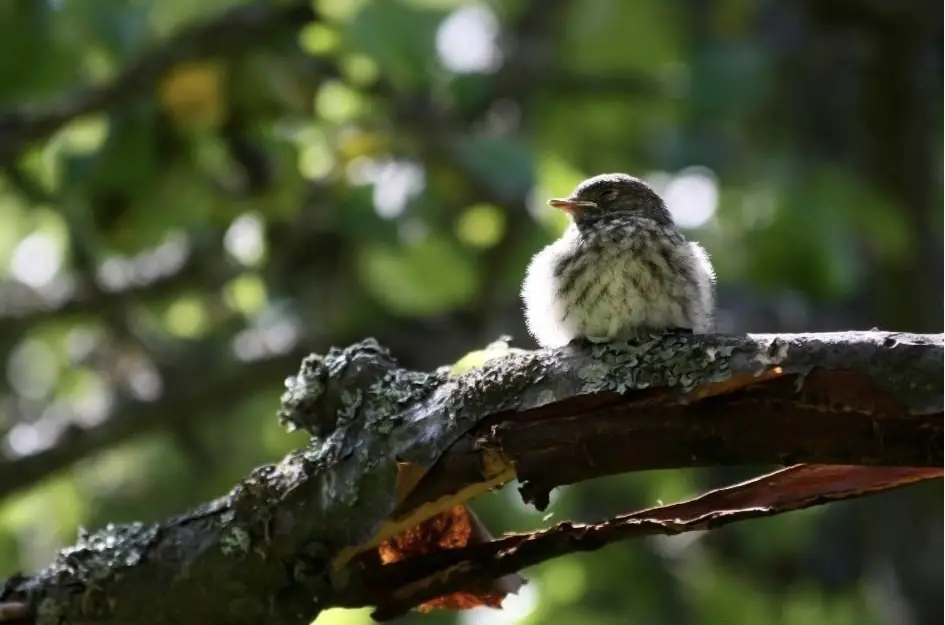Like many other animals, birds require sleep to recuperate from disease or injury, restore energy, and grow. However, they do not sleep the same way humans do.
During the day, many birds will take a nap to replenish their energy. This is especially true for birds that must travel greater distances to find food. Most birds will go to their safe sleeping area as soon as darkness falls and will not leave until the first light of day. Because diurnal birds cannot see in the dark, they do this to protect themselves from nocturnal predators.
What Is The Average Amount of sleep needed by birds?
A variety of factors influence how much sleep a bird requires:
- What was the bird’s daily activity level?
- The amount of light it receives; birds are more are more tired when it is dark
- Species – different species require different amounts of sleep
Birds, on average, require 10-12 hours of sleep per night, going to bed around 7pm and waking up around 5am. To get a good night’s sleep, they need their sleep to be disrupted.
If they don’t have anything planned for the day, they might even grab a couple of power naps.
Is there a sleep routine for birds?
Birds have a strict sleeping pattern. The majority of birds are diurnal, going to bed at sunset and waking up at sunrise. As a result, their sleep routine varies depending on the season.
They prefer longer days in the summer because it allows them to concentrate on finding a partner and raising their brood.
Only a few species can be found outside of equatorial climates, and even fewer can be found in temperate zones. Parrots that live further from the equator have slightly altered sleeping patterns, sleeping longer in the winter and shorter in the summer.
See also:
- The Sleeping Habits Of A Robin: How Many Hours Do Robins Sleep For?
- Do Birds Sleep In The Same Place Everyday
When do birds get up in the morning?
At sunrise, birds will rise. Some of them will get up a little earlier in the morning in order to gain an advantage when hunting or foraging for food.
Others may use the early hours to mark their area before anyone else does, giving them an advantage when it comes to finding partners. This is why certain male birds sing so much early in the morning.
Migrating, mating, cold weather, suspecting predation, or being disturbed by noise or light might cause birds to wake up during the day.
On the other hand, nocturnal species, such as barn owls, sleep during the day and wake up at midnight to hunt.
Sleep in a Uni-hemospheric Environment
Unlike humans, who can fall into total unconsciousness when sleeping, birds can control their sleep. Birds can sleep while keeping one eye open by using uni-hemispheric slow-wave sleep. Only a fraction of a bird’s brain is resting during this period. Even when at rest, the other half of their brain stays attentive, which is how a bird can detect any coming danger.
Unfortunately, further research is needed to figure out how birds can do so. However, studies on uni-hemispheric slow-wave sleep show that the more safe and secure a bird feels, the deeper it may sleep, which can be good and bad for the bird. Deeper sleep, of course, can be more restorative, but it also renders them to be more vulnerable to danger.
Other research has discovered that some bird species, such as albatrosses, can sleep with one eye open while flying.
Another excellent defence tactic is to sleep in a vast flock when birds sleep. When a bird roosts communally, it is protected by its roost-mates since predators have more prey to choose from, giving the bird a higher chance of escape.
Is it possible for some birds to see at night?
Yes, of course. While diurnal birds are unable to see properly at night, nocturnal species, such as owls, have enormous pupils that can encompass the entire front section of the eye when expanded wide. Their eyes are likewise tubular rather than spherical, having large lenses that are near to the retina. This is what permits them to register a lot of light on their retina.
Unfortunately, this can make it difficult for them to concentrate. Because the structure of owls’ eyes prevents them from rotating in their sockets, many experts believe they are farsighted. They can also see at night thanks to a layer of tissue called tapetum that covers their eyes and lies below the retina. This assists the eyes in making the most of low-light situations.
Conclusion
Observation of bird behaviour suggests that they do not sleep as much as mammals, if at all. Taking a nap or two a day can mean the difference between being able to fly home or being stranded in unfamiliar terrain when night falls because they expend so much energy while flying.
A few species of songbird do take to the skies when the sun goes down, but these are typically the predatory species that most songbirds avoid as darkness falls. A newfound appreciation for the brave birds that visit your bird feeders may be in order, now that you’ve learned more about their sleeping habits and some fascinating facts about uni-hemispheric slow-wave sleep.

